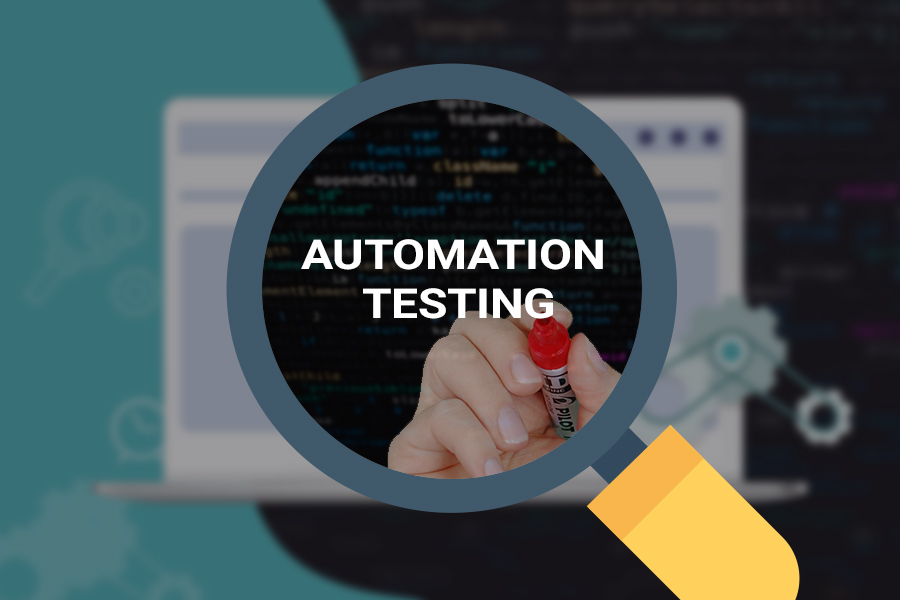From Manual to Automated Screening: A Comprehensive Guide to Transitioning Efficiently and Effectively
In the realm of software application screening, the shift from manual to automated procedures has become an increasingly essential transition for organizations seeking to boost effectiveness and precision in their testing practices. As innovation continues to breakthrough, the requirement for reliable and seamless automatic screening techniques has actually never ever been much more important. The journey from handbook to automated screening is not without its difficulties, but when approached tactically and with a clear strategy in mind, the benefits can be considerable - automation testing. In this detailed guide, we will discover essential actions and considerations necessary for a successful transition, from the initial option of tools to the integration of automation right into existing operations. Remain tuned to uncover the understandings that will help lead the way for a smoother and more effective testing procedure.
Advantages of Automated Evaluating
Automated screening offers countless benefits, boosting effectiveness and precision in software development procedures. One main advantage is the substantial decrease in screening time. Automated examinations can be run simultaneously on several tools and operating systems, dramatically accelerating the screening stage compared to hands-on screening. This raised efficiency enables for faster responses on the quality of the software, allowing programmers to identify and deal with problems without delay.
Furthermore, automated testing makes certain a greater degree of precision in detecting issues. Consistency in screening is additionally enhanced, as automated examinations execute the exact same steps exactly each time they are run.
Choosing the Right Tools

Firstly, evaluate your objectives and requirements. Recognize the extent of your task, the innovations included, and the capability of your team. This evaluation will certainly assist you figure out the attributes and capacities you need in your testing devices.
Second of all, think about the compatibility of the tools with your existing systems and processes. Smooth combination with your current software program growth lifecycle is important to make sure a smooth transition to automation.
In addition, review the scalability and versatility of the tools. As your screening needs evolve, the devices must be able to adjust and fit changes properly.
Finally, consider the assistance and neighborhood around the tools. When implementing automated screening, robust assistance and an active individual community can supply valuable sources and help. By carefully taking into consideration these aspects, you can pick the right tools that straighten with your demands and established the stage for an effective shift to automated screening.
Composing Reliable Test Scripts

When crafting examination scripts, it is necessary to consider the details demands of the software program being checked and ensure that the manuscripts address all crucial performances. Clear and descriptive naming conventions for test manuscripts and test instances can improve readability and maintainability. Additionally, including error handling devices within the test manuscripts can help in determining and dealing with concerns promptly.
Additionally, arranging test manuscripts into modular elements can boost reusability and scalability, reducing redundancy and improving effectiveness in test manuscript maintenance. Regular reviews and updates to evaluate manuscripts are essential to keep rate with progressing software application needs and functionalities. By following these principles, testers can create reliable and robust test manuscripts that add considerably to the success of automated testing processes.
Integrating Automation Into Workflows
By perfectly integrating automated screening tools like Selenium or Appium helpful hints right into the software growth lifecycle, teams can attain faster responses on code modifications, leading to quicker bug discovery and resolution. This integration permits for continuous screening throughout the advancement procedure, making sure that any concerns are determined early on, resulting in greater software high quality. Proper combination of automation devices requires partnership in between development, screening, and this link procedures teams to develop a unified workflow that enhances efficiency and efficiency in supplying premium software program items.
Guaranteeing a Smooth Change
Efficiently transitioning to automated testing entails thorough preparation and careful execution to lessen disturbances and optimize performance in the software development process - automation testing. To make certain a smooth transition, it is vital to begin by conducting a detailed assessment of the present testing processes and recognizing locations where automation can bring one of the most significant benefits. Engaging with all stakeholders early while doing so, consisting of programmers, testers, and task managers, is essential for amassing support and buy-in for the automation effort
Interaction is vital during this transition stage. Clear interaction of the objectives, advantages, and assumptions of automated testing helps to take care of any kind of resistance or problems that might arise. Additionally, offering sufficient training and resources for staff member to upskill in automation tools and methods is crucial for making sure an effective transition.

Final Thought
Finally, transitioning from guidebook to automated Click Here screening offers numerous benefits, including enhanced effectiveness and dependability. By selecting the appropriate tools, writing efficient examination manuscripts, and integrating automation effortlessly right into process, companies can make certain a smooth and successful shift. It is vital to welcome automation as a beneficial property in software program testing processes to enhance general high quality and productivity.
In the realm of software testing, the shift from handbook to automated processes has become an increasingly vital transition for companies looking for to improve effectiveness and precision in their screening methods. Automated tests can be run all at once on numerous gadgets and operating systems, considerably speeding up the testing stage contrasted to hands-on testing. Uniformity in screening is likewise enhanced, as automated tests carry out the same actions exactly each time they are run.To guarantee the effective application of selected screening tools, the production of efficient test manuscripts plays a vital role in confirming the functionality and efficiency of automated processes - automation testing. By adhering to these principles, testers can develop efficient and durable test manuscripts that contribute dramatically to the success of automated screening procedures